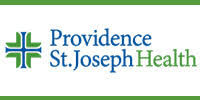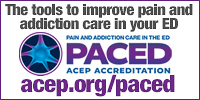Protect patients and yourself by mastering the most error-prone drugs.
The 10 Medications Nurses Are Most Likely to Mix Up
Medication errors remain one of the most preventable causes of patient harm. Even with barcode scanning and electronic charting, mix-ups still happen at the bedside. For nurses juggling high workloads, look-alike and sound-alike (LASA) drugs continue to be a daily hazard. Here are ten medications most likely to be confused — and how to avoid the trap.
1. Hydralazine vs. Hydroxyzine
One lowers blood pressure, the other calms anxiety or itching. In a rush, both start with “Hydra-” and are often stored close together. Always double-check the route and indication before administration.
2. Clonidine vs. Klonopin (clonazepam)
Both treat very different conditions: hypertension vs. seizures and anxiety. The overlapping names lead to frequent charting or dispensing mistakes. Confirm the patient’s diagnosis and dose strength — micrograms vs. milligrams can mean a dangerous swing in BP.
3. Lamictal (lamotrigine) vs. Lamisil (terbinafine)
One is an anticonvulsant, the other an antifungal. Similar spelling, totally different pharmacology. Lamictal errors can cause toxicity or missed seizure control; Lamisil errors delay treatment. Spell it out when transcribing.
4. Celebrex vs. Celexa
Celebrex relieves pain and inflammation; Celexa treats depression. A slip of the hand in the eMAR or a fast verbal order can lead to the wrong med entirely. Focus on indication before scanning.
5. Zantac vs. Zyrtec
Both OTC, both start with “Z,” and both used for common symptoms. But one’s for acid reflux, the other for allergies. In mixed outpatient or med-surg carts, they’re often side by side — label and verify.
6. Morphine vs. Hydromorphone (Dilaudid)
The classic high-alert confusion. Both narcotics, both IV and PO, but hydromorphone is 5–7 times stronger. Never assume equivalence. Use your independent double-check every single time.
7. Tramadol vs. Trazodone
Pain vs. sleep. Similar names, similar tablets. Dispensing or documentation errors are common during night shifts. Always confirm the patient’s complaint and MAR indication.
8. Levothyroxine vs. Liothyronine
Synthroid vs. Cytomel — both thyroid hormones, but different potency. Patients switching between them may experience hypo- or hyper-thyroid symptoms fast. Verify with the pharmacy if a name looks off.
9. Metoprolol vs. Metolazone
A beta-blocker versus a diuretic. Commonly used together in CHF, but when confused, it leads to severe hypotension or electrolyte imbalance. Always check route and frequency before giving.
10. NovoLog vs. NovoLIN
Both insulin, but with opposite timing profiles — rapid-acting vs. intermediate. Confusing them can send glucose crashing or soaring. Separate storage and bold labeling are essential in every fridge.
The Common Threads
Most mix-ups share the same root causes: similar spelling or packaging, fatigue, interruptions, and time pressure. Barcode scanning helps — when used properly — but it doesn’t replace mindful practice. Take that extra breath before administering.
Prevention at the Bedside
• Read the entire label, not just the first few letters.
• Know your patient’s condition and why they’re receiving the medication.
• Keep high-alert look-alike drugs physically separated.
• Encourage second checks on opioids, insulin, and IV pushes.
• Report near-misses. They prevent the next true error.
Final Thought
The best defense is awareness. Knowing which medications trip up even the most experienced nurses keeps patients safe — and keeps nurses protected from the kind of mistake that can define a career.
Calendar




